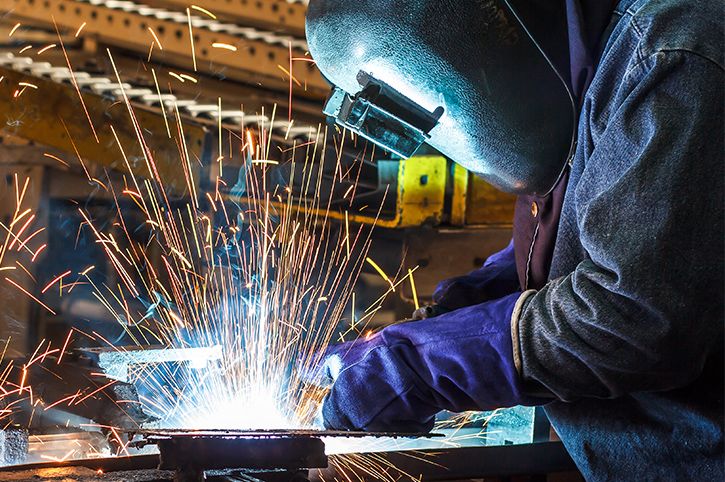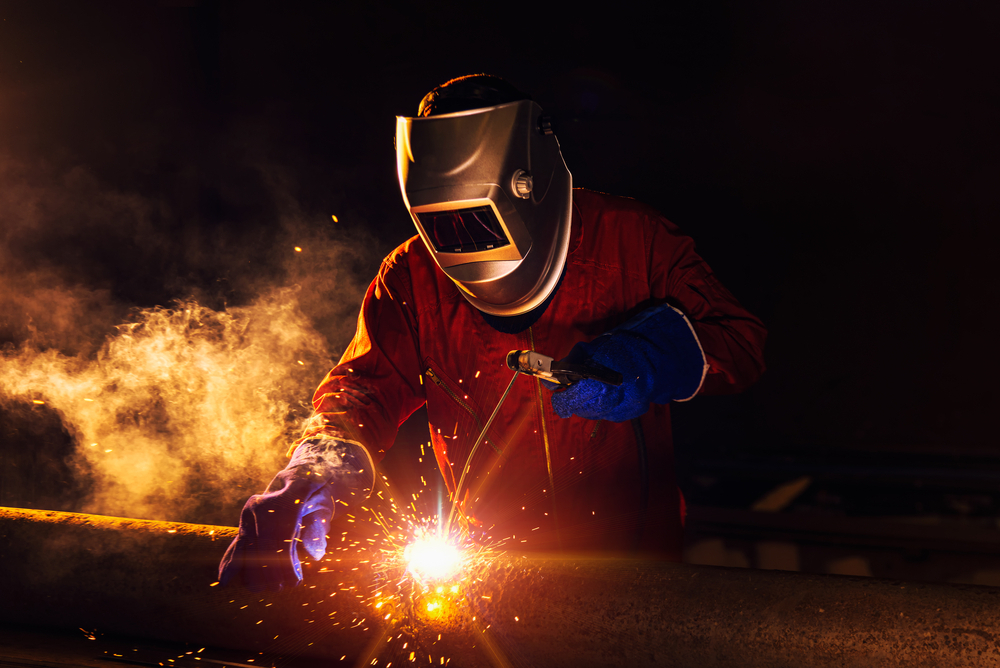Everything about Welding: Trick Insights Into Techniques and Finest Practices for Success
Welding encompasses a variety of techniques, each suited for certain products and applications. Recognizing these methods, such as GMAW, SMAW, and TIG, is necessary for attaining excellent results. Moreover, the ideal devices and security practices can not be neglected. As prep work and troubleshooting play essential functions in the welding process, mastering these elements can significantly enhance the high quality of the end product. What are the essential elements that guarantee a successful weld?
Understanding Various Welding Techniques
Welding techniques incorporate a range of techniques, each suited to details applications and products. Amongst one of the most usual techniques are Gas Metal Arc Welding (GMAW), Protected Steel Arc Welding (SMAW), and Tungsten Inert Gas Welding (TIG) GMAW, additionally referred to as MIG welding, is prominent for its speed and convenience, making it optimal for thin products. SMAW, or stick welding, is preferred for its simplicity and performance in outside atmospheres, particularly with thicker steels. TIG welding uses precision and control, making it suitable for intricate work and non-ferrous steels (Belgrade Fabrication). Each technique has its distinct benefits and considerations, allowing welders to pick the finest approach based on the task's needs, product type, and preferred end results. Comprehending these techniques is vital for effective welding
Vital Welding Tools and Devices
While various welding methods call for particular abilities, the best devices and devices are similarly necessary for accomplishing quality outcomes. Important welding equipment consists of welding equipments, which differ depending upon the technique-- such as MIG, TIG, or stick welding. Protective equipment, including handwear covers, aprons, and safety helmets, warranties safety and security and convenience throughout the procedure. Furthermore, clamps and fixtures aid safeguard materials in location, guaranteeing precision in welds. Consumables like welding rods, wire, and securing gas are additionally crucial elements that affect the quality of the weld. Furthermore, devices such as mills and cutters help with surface area prep work and post-weld ending up, adding to a professional outcome. Spending in top quality tools inevitably improves the performance and performance of welding jobs.
Safety And Security Practices in Welding
Appropriate safety and security techniques are crucial in the welding industry to safeguard workers from possible risks. Welders have to put on proper personal safety equipment (PPE), including headgears with appropriate shading, handwear covers, and flame-resistant clothes. Sufficient air flow is vital to lower exposure to unsafe fumes and gases produced during the welding procedure. In addition, workers ought to be trained in the proper handling of welding devices to prevent mishaps. Fire security measures, such as keeping combustible materials far from the welding area and having fire extinguishers conveniently available, are essential. Routine assessments of equipment and work spaces can aid determine prospective risks prior to they result in crashes. By adhering to these security methods, welders can create a much safer working setting and lessen risks connected with their trade.
Readying Products for Welding
Preparing products for welding is a crucial step that significantly affects the high quality and honesty of the end product (Belgrade Welding). Correct preparation includes cleaning up the surface areas to get rid of contaminants such as dirt, rust, and oil, which can compromise the weld. Strategies such as grinding, fining sand, or utilizing solvents are generally utilized to accomplish a clean surface. Additionally, guaranteeing that the products mesh well is essential; spaces can bring about weak welds. It's also important to take into consideration the placement and positioning of the elements, as this will affect the ease of welding and the final outcome. Finally, selecting the appropriate filler material and making sure compatibility with the base steels is vital for accomplishing strong, durable welds
Tips for Getting High-Quality Welds
Accomplishing top quality welds calls for interest to information and adherence to ideal methods throughout the welding procedure. Proper joint preparation is vital, guaranteeing surface areas are clean and cost-free from impurities. Selecting the suitable filler material and welding method based on the base steels is essential for excellent bonding. Maintaining regular traveling rate and angle while welding can promote and prevent issues uniformity. In addition, controlling warm input is vital; too much warmth can lead to bending and deteriorated joints. Frequently checking the welds throughout the process allows for prompt modifications if necessary. Utilizing appropriate post-weld treatments, such as cleansing and stress relief, can enhance the longevity and honesty of the weld, inevitably guaranteeing a successful outcome.
Repairing Usual Welding Issues
Welding frequently presents obstacles that can influence the high quality and stability of the end product. Typical problems such as porosity, inconsistent weld beads, and getting too hot can arise, each needing certain fixing methods. Recognizing these troubles is crucial for welders to enhance their abilities and accomplish excellent outcomes.
Porosity Issues Explained
Porosity can usually be neglected, it remains a crucial issue in welding that can endanger the integrity of an ended up item. Porosity refers to the visibility of little gas pockets within the weld bead, which can lead and compromise the joint to premature failing. This issue normally emerges from pollutants, moisture, or incorrect securing gas insurance coverage throughout the welding process. To alleviate porosity, welders should confirm that the base products are completely dry and tidy, utilize proper shielding gases, and keep consistent welding parameters. Routinely evaluating the devices and setting can also help identify prospective problems prior to they manifest in the weld. Dealing with porosity properly is vital for achieving strong, long lasting welds that satisfy top quality criteria.

Irregular Weld Beans
Irregular weld grains can substantially impact the high quality and strength of an ended up item. Various elements add to this problem, including incorrect travel speed, wrong amperage setups, and irregular electrode angles. When the welder moves too quickly, a grain may appear narrow and lack penetration, while relocating also slowly can trigger too much buildup. Additionally, using the wrong amperage can result in either undercutting or too much spatter, both of which concession weld honesty. The welder's strategy, such as inconsistent lantern motion, can also cause unequal bead appearance. To reduce these issues, welders ought to concentrate on maintaining consistent, controlled motions and ensuring appropriate tools settings to accomplish uniformity in their welds. Consistency is essential to accomplishing reliable and solid welds.
Getting Too Hot and Warping Issues
Too much heat during the welding process can lead to considerable overheating and deforming issues, impacting the architectural integrity of the workpiece. These issues often manifest as distortion, which can jeopardize positioning and fit-up, making additional setting up challenging. Elements adding to overheating consist of the option of welding parameters, such as voltage and go now take a trip speed, in addition to the kind of product being welded. To minimize these concerns, his comment is here welders must preserve constant travel rate and appropriate heat input while keeping track of the work surface temperature level. Furthermore, pre-heating or post-weld warmth therapy can help relieve anxieties brought on by fast cooling - Montana Mobile Welding and Repair Welding. Routine evaluation and adherence to ideal methods are necessary in avoiding overheating and making sure the durability and dependability of bonded frameworks
Regularly Asked Inquiries
What Are the Occupation Opportunities in the Welding Sector?
The welding industry provides varied job possibilities, including settings as welders, inspectors, designers, and educators. Experts can operate in manufacturing, building, aerospace, and auto industries, profiting from strong demand and competitive salaries in numerous roles.
Exactly How Can I Enhance My Welding Rate Without Sacrificing High Quality?
To boost welding speed without giving up quality, one must exercise efficient methods, preserve equipment, optimize settings, and improve hand-eye coordination. Routine training and looking for feedback can additionally substantially add to accomplishing much faster, high-grade welds.
What Certifications Are Offered for Welders?
Countless qualifications exist for welders, consisting of those from the American Welding Culture (AWS), the National Facility for Construction Education And Learning and Research Study (NCCER), and numerous industry-specific organizations. These credentials improve employability and demonstrate ability effectiveness.
Just How Does Welding Influence the Qualities of Metals?
Welding affects the residential or commercial properties of metals by altering their microstructure, which can result in adjustments in ductility, solidity, and stamina. Warmth input and air conditioning rates visit this website throughout the procedure substantially impact these material attributes.
Can I Weld Dissimilar Metals Together?
